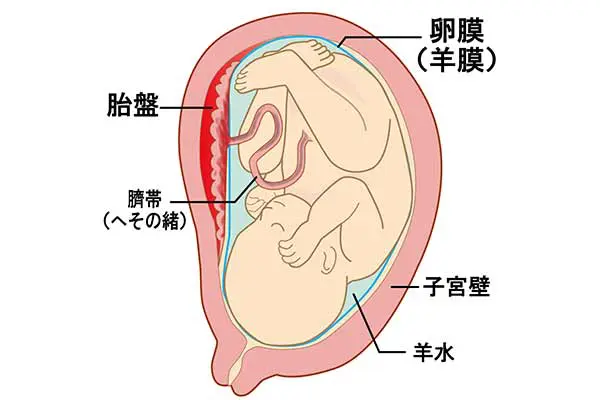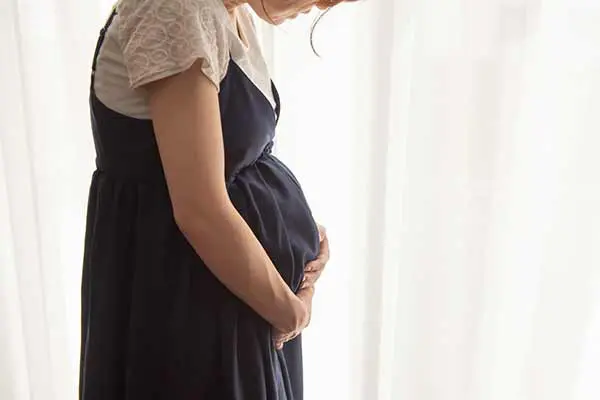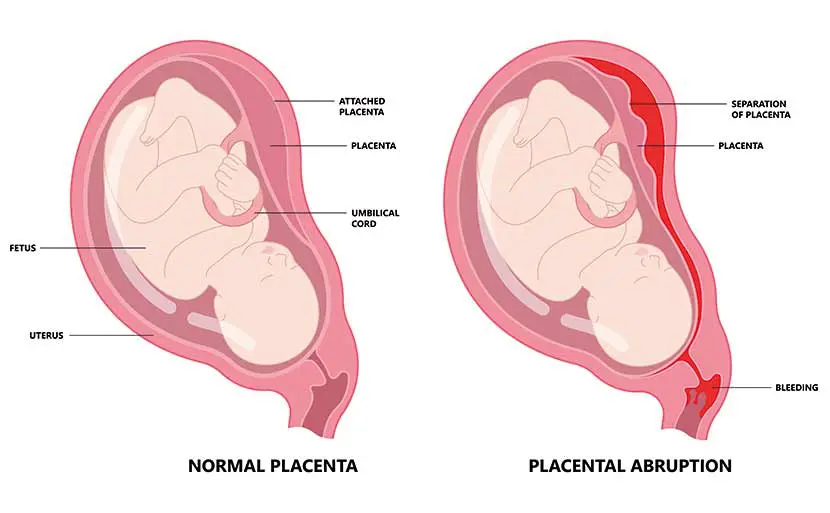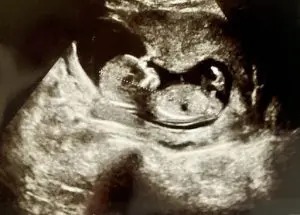Summary of this article
Precocious abruption of the normal placenta is when the normally positioned placenta detaches for some reason, even though the baby is still in the abdomen. If the placenta detaches while the baby is still inside the abdomen, the baby cannot receive nutrition and oxygen. The placenta often bleeds heavily when it detaches and is one of the main causes of death in pregnant women.
Introduction
Premature abruption of the normal placenta is a life-threatening condition in which the placenta detaches for any reason during pregnancy, endangering the life of the baby and the pregnant woman. There is a high mortality rate for both the baby and the mother, and not a moment too soon can be lost if this disease occurs. In this article, we will briefly summarise the basics of early detachment of the normal placenta, as well as explain the symptoms seen with early detachment of the normal placenta and how you can prevent it yourself.
What is the placenta?
First of all, here is a brief explanation of what the placenta is and what it does, as well as a brief description of NIPT, which is closely related to the placenta.
Structure and role of the placenta
The placenta is an organ that supplies the baby with nutrients and oxygen. It is formed in the mother’s womb when pregnancy is established and is connected to the baby by a thin cord called the umbilical cord (umbilical cord).

How NIPT works
Prenatal diagnosis is a test to determine whether a baby is born with a birth defect (chromosomal abnormality). Normal prenatal diagnosis is carried out by inserting a thin needle into the mother’s abdomen to extract amniotic fluid and chorionic villi, which carries a risk of miscarriage of 1/300 for the amniotic fluid test and 1/100 for the chorionic villi test.
NIPT is a test that uses blood samples from the mother to detect genes of the baby’s origin and check for chromosomal abnormalities such as 21 trisomy (Down syndrome), 18 trisomy (Edwards syndrome), 13 trisomy (Patau syndrome). It is also called non-invasive prenatal genetic testing/non-invasive prenatal genetic testing because it can be performed using the same blood as a normal blood sample and there is no risk of miscarriage.
One of the causes of false positives (when the baby has no chromosomal abnormality but the test result indicates a suspected chromosomal abnormality) in this NIPT is placental mosaicism. When the placenta contains a small number of cells with no chromosomal abnormalities mixed with cells that do have abnormalities, the genes can get mixed up in the mother’s blood. Placental mosaicism is one condition that is currently attracting a lot of attention because it can cause stunted growth in babies.
What is premature separation of the normal placenta?
Premature separation of the normal placenta is when the normally positioned placenta detaches for some reason, even though the baby is still in the abdomen. If the placenta detaches while the baby is still inside the abdomen, the baby’s life is at risk because it can no longer receive nutrients and oxygen. The placenta often bleeds heavily when it detaches and is one of the main causes of death in pregnant women.
Premature separation of the normal placenta begins to increase rapidly from around 32 weeks’ gestation, with a peak incidence at 36 weeks’ gestation. It often develops just before delivery and is a disease that cannot be relaxed until the baby is safely delivered.
Causes of early normal placental abruption
As of July 2022, there is no known definite cause for the occurrence of early normal placental abruption. However, it is now known that there are certain tendencies in people who are more likely to suffer from early normal placental abruption. This section explains who is more likely to suffer from early normal placental abruption and how likely it is to occur.
People who are prone to normal placental premature abruption
The following are some of the currently known people who are more likely to have a premature separation of the normal placenta. The conditions that make you more likely to have it are listed in order of risk*1.
- Ever had early abruption of the normal placenta: 10 times more likely
- Intrauterine infection: 9.7 times more likely
- Pre-term water breaking for more than 48 hours: 9.9 times
- Gestational hypertension: 4.45 times
- Pregnancy complicated by hypertension: 2.48 times
- Pre-term water breaking less than 48 hours: 2.4 times
- Premature birth: 1.63 times
- In vitro fertilisation-embryo transfer (IVF-ET) pregnancy: 1.38 times more likely
- Smoking: 1.37 times more likely
- Older age at birth (35 years or older at birth): 1.20 times higher
Another cause of premature separation of the common placenta other than the above is a sudden injury or accidental impact on the abdomen. For example, if there is an impact to the abdomen, such as in a car accident or if the abdomen is struck by a fall, the placenta may not be able to withstand the impact and may detach.
The probability of having an everted placenta accreta
The probability of early abruption of the common placenta is 5.9 per 1000 live births when there is only one baby in the womb (singleton) and 12.2 per 1000 live births when there are two babies in the womb (twins)*1.
Symptoms of early normal placental abruption
Symptoms of early abruption of the normal placenta include bleeding and pain in the lower abdomen, abdominal tightness and hardness, contractions of the uterus and tension in the abdominal muscles called platelets hardness. If there is bleeding, especially during pregnancy, it is necessary to check for the possibility of early separation of the normal placenta, even if the amount is small.
The symptoms listed above are a little similar to those of impending premature labour. The abdominal pain during early abruption of the normal placenta is different from the pain of childbirth and is often the same pain that lasts for a long time rather than in waves. It may develop suddenly with severe pain, or it may be ‘somewhat painful’ for a long time. It is also common for the uterus to contract or become unnaturally tense.
If the placenta is detached and the baby’s life is in danger, the baby’s fetal movements may stop. If there is excessive bleeding, anaemia may also cause pregnant women to experience symptoms such as dizziness and dizziness.
Some women have early abruption of the normal placenta, which does not cause any symptoms. In this case, you may not be aware of it. Sometimes it is only at birth that it is discovered that you have had an everted premature abruption of the placenta.

Signs of early normal placental abruption
There are three signs that strongly suggest early normal placental abruption.
- Constant pain in the abdomen
- Heavy bleeding
- Can’t feel the baby’s movements
If any of the above occurs, especially before 30 weeks’ gestation, contact the hospital immediately, as it may be due to early abruption of the normal placenta.
Effects on the baby
When early abruption of the normal placenta occurs, the mortality rate for babies is 25-30%. About 20% of all perinatal deaths, including stillbirths and early neonatal deaths, are due to early abruption of the normal placenta*2.
The baby is also often left with permanent disabilities due to the lack of nutrition and oxygen from the placenta, and 30% of all cases of severe cerebral palsy are caused by early abruption of the normal placenta*3.
Intraventricular haemorrhage is also common in newborns, often resulting in developmental disorders including mental retardation and epilepsy.
There is also a high mortality rate for mothers, with 11% of maternal deaths due to obstetric crisis haemorrhage, a life-threatening haemorrhage associated with pregnancy and delivery, caused by this disease.
Treatment of early normal placental abruption
The treatment for early abruption of the normal placenta is to deliver the baby as soon as possible and get the baby out of the mother’s body. The shorter the time to delivery, especially if the baby is showing signs of danger, such as bradycardia, the better the chance of survival with no residual effects on the baby. If there are no contractions, an emergency caesarean section is often indicated.
However, if the mother’s condition is poor and she is already anaemic or dehydrated due to heavy bleeding, the caesarean operation itself is often fatal to the mother. In such cases, the first priority is to stabilise the mother’s condition by administering haemostatic agents, thromboprophylaxis and blood transfusions.
Even if a clear diagnosis of early abruption of the normal placenta cannot be made, if the abdominal pain persists and there is even the slightest suspicion of early abruption of the normal placenta, the patient is admitted to hospital and the foetal heartbeat is monitored using a delivery monitoring device.
Preventing premature separation of the normal placenta
The first thing pregnant women can do to prevent early separation of the normal placenta is to stop smoking. This is the only thing you can do on your own, so if you are pregnant and currently smoke, quit now. If you have family members who are pregnant, you should also stop smoking because of the possibility of passive smoking.
Also, be careful if you have always had high blood pressure or if your blood pressure has increased since becoming pregnant. Consult with your doctor and keep your blood pressure under strict control.
Symptoms of premature separation of the normal placenta are similar to those of premature birth. If you experience abdominal pain or bleeding, contact a hospital immediately.
Summary
The above is a brief summary of early abruption of the normal placenta. Early abdominal pain and bleeding in mid to late pregnancy should always be treated with suspicion of early abruption of the everted placenta. Early detection often saves the life of the baby and mother. If you think something is wrong, contact a hospital immediately.
【References】
- *1 Japanese Society of Obstetrics and Gynaecology – Guidelines for the Practice of Obstetrics and Gynaecology – Obstetrics 2020
- *2 National Centre for Child Health and Development – What you need to know about childbirth
- *3 Japanese Society of Obstetricians and Gynaecologists – (6)Early normal placental abruption
- Japan Agency for Health Care Excellence Maternity Medical Compensation Scheme – For expectant mothers, what is early abruption of the abruptio abruptio placentae?
- Clinical Support Today – Premature separation of the aberrant placenta
- Japanese Society of Obstetricians and Gynaecologists – 2. Confined placental mosaicism (CPM)
- Department of Obstetrics and Gynaecology, Kyushu University Hospital – Clinical presentation of early separation of the everted placenta in very preterm labour
Article Editorial Supervisor

岡 博史先生
【役職】
【資格】
【略歴】
【所属】
【SNS】
 中文
中文












